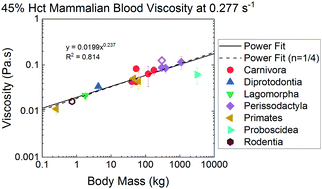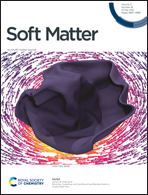Abstract
Recent advances in hemorheology are extended to study blood rheology across species, which has important clinical implications particularly in intravenous drug scaleup as drugs undergoing clinical trials are first tested in animals. Some of the first hemorheological measurements from seven different species under both steady and transient shear conditions are presented and modeled using a rheological model developed and validated on human blood rheology fit to 20 different donors. Despite similar physiological properties across the blood samples from different species, significant differences are observed, particularly at low shear rates. Blood from species that form rouleaux exhibit a yield-like behavior and enhanced viscoelasticity at low shear rates, while blood from species without rouleaux exhibit nearly Newtonian behavior at similar shear rates. Viscoelasticity due to blood cell deformation is evident for all species at high shear rates. Novel, unidirectional large amplitude oscillatory shear measurements differentiate species. Using the newly acquired data in combination with previous literature data, a new allometric scaling relation is suggested for the low-shear blood viscosity for various mammalian evolutionary orders. Using an established model for arterial branching across species, it is conjectured that the observed hemorheological scaling across species is driven by maintaining a constant wall shear stress in arterial vessels.



 Please wait while we load your content...
Please wait while we load your content...